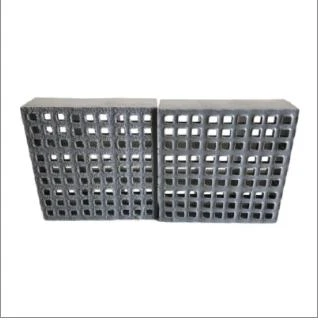loading...
- No. 9, Xingyuan South Street, Dongwaihuan Road, Zaoqiang County, Hengshui, Hebei, China
- admin@zjcomposites.com
- +86 15097380338
- Welcome to visit our website!
glass fiber reinforced polymer bars
Glass Fiber Reinforced Polymer (GFRP) Bars Revolutionizing Construction and Civil Engineering
In recent years, the construction and civil engineering industries have witnessed a significant shift toward innovative materials aimed at enhancing durability, reducing weight, and improving overall structural integrity. Among these advancements, Glass Fiber Reinforced Polymer (GFRP) bars have emerged as a revolutionary solution, providing a combination of strength, lightness, and resistance to corrosion that traditional materials cannot match.
What are GFRP Bars?
GFRP bars are composite materials made by embedding glass fibers within a polymer matrix. The resulting composite not only benefits from the high tensile strength of glass fibers but also the lightweight and corrosion-resistant properties of synthetic resins. These bars are typically used as alternatives to conventional steel reinforcement in concrete structures, bringing numerous advantages and applications.
Advantages of GFRP Bars
1. Corrosion Resistance One of the most notable benefits of GFRP bars is their resistance to corrosion. Unlike steel, which can rust when exposed to moisture and various chemicals, GFRP materials remain unaffected by environmental factors. This makes them ideal for structures located in harsh environments, such as coastal areas or regions with aggressive chemical exposure.
2. Lightweight GFRP bars are significantly lighter than steel, making them easier to handle and transport. This characteristic reduces the overall weight of concrete structures, which can lead to lower foundation costs and easier installation. Additionally, the reduced weight can enhance the design flexibility of structures.
3. High Strength-to-Weight Ratio GFRP bars offer a remarkable strength-to-weight ratio, which leads to improved structural performance. The high tensile strength of glass fibers allows for thinner designs without compromising the structural integrity of concrete, offering more economical solutions for various engineering challenges.
4. Non-Magnetic and Non-Conductive GFRP bars do not conduct electricity and are non-magnetic. This property makes them suitable for applications in electromagnetic field-sensitive environments, such as in certain types of bridges and tunnels where electronic instruments and safety equipment are critical.
5. Durability and Longevity Structures reinforced with GFRP bars typically have a longer lifespan due to their resistance to climatic and chemical degradation. This can lead to reduced maintenance costs and extended intervals between repairs.
glass fiber reinforced polymer bars

Applications of GFRP Bars
The usage of GFRP bars spans various sectors within the construction and civil engineering fields. They are increasingly employed in
- Bridges GFRP bars can be used to reinforce bridge decks, providing durability and reducing the need for maintenance due to corrosion. - Underground Structures The resistance to water and chemicals makes GFRP bars an ideal choice for tunnels and underground parking garages, where moisture is prevalent.
- Sustainable Construction As green building practices gain traction, GFRP bars offer an environmentally friendly alternative by prolonging the lifespan of structures and reducing the carbon footprint associated with maintenance and repairs.
- Retrofitting Projects In existing structures, GFRP bars can be effectively utilized for retrofitting to enhance load capacity and extend the service life of buildings and infrastructure.
Challenges and Future Prospects
While the benefits of GFRP bars are considerable, there are challenges to their widespread adoption. The initial costs associated with GFRP materials can be higher than traditional alternatives, and the industry is still in the process of establishing standards for their use. Education and awareness about the benefits of GFRP bars among engineers and architects are crucial for driving their integration into future projects.
The future of GFRP bars looks promising. Continued advancements in composite technology and production methods are expected to lower costs and enhance performance specifications. As sustainability becomes an essential aspect of construction practices, GFRP bars may play a pivotal role in achieving long-lasting, environmentally friendly structures.
Conclusion
Glass Fiber Reinforced Polymer bars represent a significant advancement in the field of construction and civil engineering. With their numerous advantages, including corrosion resistance, lightweight properties, and high strength-to-weight ratios, GFRP bars hold the potential to transform how structures are designed and built. As industries adapt and evolve, GFRP bars are likely to become increasingly prevalent, paving the way for a new era of durable and sustainable infrastructure.
-
Transform Your Spaces with FRP Grating SolutionsNewsNov.04,2024
-
The Versatility and Strength of FRP RodsNewsNov.04,2024
-
The Excellence of Fiberglass Water TanksNewsNov.04,2024
-
The Benefits of FRP Grating for Your ProjectsNewsNov.04,2024
-
Elevate Your Efficiency with FRP Pressure VesselsNewsNov.04,2024
-
Welcome to the World of FRP Pressure VesselsNewsOct.12,2024
-
Unveiling the Future of Filtration: Why FRP Filter Vessels are a Game ChangerNewsOct.12,2024
